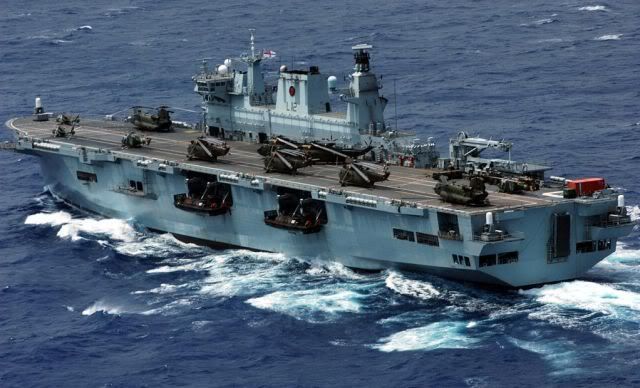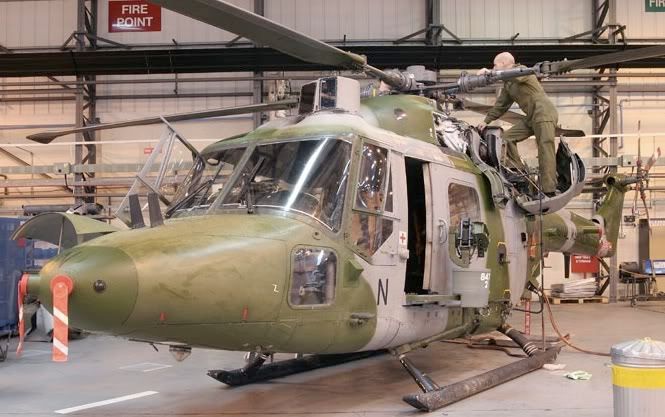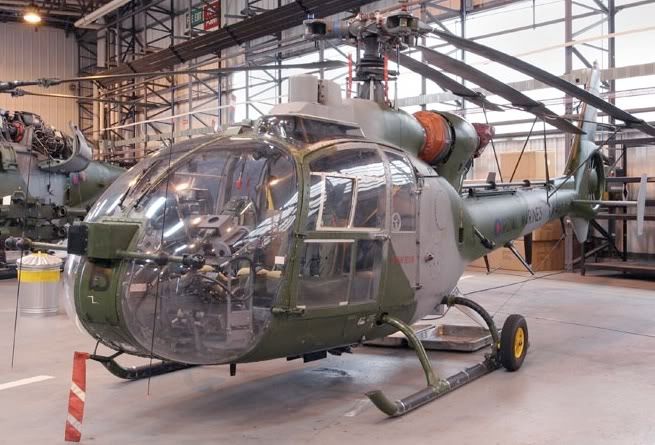|
|
Post by Dave Homewood on Oct 10, 2007 15:18:57 GMT 12
An area not often covered is the Kiwis who flew in the Fleet Air Arm in WWII.
I was wondering, though the RNZAF Corsairs never scored any air to air kills, did any Kiwis who flew for the FAA score aerial kills?
Also, in looking at a book last night I noted a FAA pilot on a Royal Navy ship flying Corsairs, who was a Major, and he was a member of the Royal Marines. I never knew the Royal Marines had pilots, I thought all FAA pilots were Navy (RN, RAN, RCN and RNZN).
Did any NZ pilots serve as pilots in the Royal Marines? Does the RM still have pilots?
|
|
|
|
Post by flycookie on Oct 10, 2007 15:38:56 GMT 12
Following blurbs from Wikiwrongia. If this is correct, then it seems the marines have had the same single-service aviation turf wars (and lost) as the FAA has with the RAF. Marine helos looked great in their tiger-stripe Arctic paintjob, as used in deployments and training in Norway, but I can't easilly find a pic of these, so maybe they're ancient history. +++The Commando Helicopter Force was formed in 1997 to consolidate command and control of the various Fleet Air Arm and Royal Marines helicopter squadrons which supported 3 Commando Brigade under Flag Officer Naval Aviation. In 1999, the CHF merged with various Royal Air Force and Army Air Corps force elements to become the Joint Helicopter Command, whilst maintaining its status as a formed unit. It is based at Royal Naval Air Station Yeovilton in Somerset, England; although aircraft are regularly deployed with 3 Cdo Brigade, overseas and to the ships of the Amphibious Ready Group; HMS Ocean ( Landing Platform Helicopter), HMS Bulwark and HMS Albion (Landing Platform Docks). Elements of the force have operated in Northern Ireland to 2002, Sierra Leone in 2000 and Bosnia and it was an element of the amphibious force for Operation Telic, the British involvement in the 2003 invasion of Iraq, notably supporting the landings to secure the Al Faw Peninsula. The force supports the 3 Cdo Brigade annual Cold Weather Warfare exercise in Norway. In 2005 the Gazelle reconnaissance helicopter was retired from service in the CHF The Commando Helicopter Force has four naval air squadrons with separate roles: 845 Naval Air Squadron - Medium-lift - Sea King HC4 846 Naval Air Squadron - Medium-lift - Sea King HC4 847 Naval Air Squadron - Light-lift, anti-armour and reconnaissance - Lynx AH7 848 Naval Air Squadron - Sea King HC4 training unit+++ Following pic of HMS Ocean with marine HC4 and Lynx helos and a pair of RAF Chinooks (I hope they're marinised or the salt will eat them before breakfast)  |
|
|
|
Post by Dave Homewood on Oct 10, 2007 15:53:54 GMT 12
Amazing. I had always assumed that the RM was part of the RN and the pilots were all RN. So did they have their own fighter squadrons in WWII?
|
|
|
|
Post by flycookie on Oct 10, 2007 15:59:14 GMT 12
Methinks they might have served in standing FAA squadrons, if not wangled outright transfers. I have a book which details some of these matters, but it's 12,000 miles away and I won't be seeing it any time soon. And, if it mentions this at all, then I have completely forgotten over the years. Following are pics of a Lynx and Gazelle in RM markings, at RNAS Yeovilton.   |
|
|
|
Post by flyjoe180 on Oct 10, 2007 17:51:18 GMT 12
|
|
|
|
Post by flyjoe180 on Oct 10, 2007 17:53:56 GMT 12
|
|
|
|
Post by flyjoe180 on Oct 10, 2007 18:51:11 GMT 12
It would appear that whilst there were a number of New Zealanders serving with the FAA as pilots during the Second World War, none achieved any aerial victories. NZ support was primarily through New Zealanders serving in the Royal Navy, RAN, and the RNZNVR, and to some extent through the RNZAF and its EATS contribution to the British Commonwealth Air Training Plan. Many Fleet Air Arm squadrons had a high proportion of New Zealanders many of whom attained high rank, including seven wartime Kiwi Commanding officers, and many more Flight Commanders and senior pilots. Lt Cdr Richardson RNZNVR lost his life in command of 1840 sqdn during operation Goodwood in Northern Norway, 24 August 1944.
One of the first Fairey Barracuda squadrons, 830 sqdn, was formed in May 1943 and its aircrew consisted mostly of RNZNVR New Zealanders, who then went on to cripple the German Battleship Tirpitz under the command of a Canadian Lt Cdr Baker-Falkner.
835 squadron's Senior Pilot and Flight Commander of the fighter component was Lt Burgham RNZNVR. He joined the RNZNVR in 1940 and trained to be a fighter pilot, and flew Wildcats from HMS Nairana on Gibralter, Atlantic and Russian Convoys. He was also involved in Captain "Johnnie Walker's Hunter-Killer Group sortie and raids on Heavy Water transporters along the Norwegian Coast. He was awarded the Distinguished Service Cross (DSC) and the Kings Commendation (MID) for "conspicuous bravery in the face of the enemy" on two separate occasions. He also received decorations from Russia and Canada. www.fleetairarmarchive.net/CommonwealthCountries/NewZealandHomepage.html |
|
|
|
Post by phasselgren on Oct 11, 2007 6:00:22 GMT 12
Actually several New Zealanders scored while serving in the FAA. Most were members of the RNZNVR but some belonged to the RN. Around 10 reached 2 or more victories (this includes shares) but none reached the ace-status.
Most of the claims were made in the Pacific with Corsairs and Hellcats. Other types were Fulmar, Sea Hurricane, Seafire and
Wildcat.
I will come back with some more information later.
|
|
|
|
Post by Dave Homewood on Oct 12, 2007 12:16:40 GMT 12
Thanks everyone. And thanks Peter, that would be appreciated. So there were indeed Kiwis with Corsair kills. I'd love to track one or two down and record their experiences.
|
|
|
|
Post by phasselgren on Oct 12, 2007 20:04:54 GMT 12
|
|
|
|
Post by phasselgren on Oct 15, 2007 21:12:14 GMT 12
Top-scoring Corsair pilot was Lieutenant(A) Adrian Hugh Churchill. He flew with 1833 Squadron from Illustrious during the attacks on Sumatra early 1945. Shot down and killed by AA 7 April 1945. Total score: 2 destroyed and 2 shared probably destroyed all Tojo fighters over or near Palembang in January 1945.
Other pilots with 2 or more victories:
Sub-Lt (A) Allen Russel Burgham: 2 destroyed (with Sea Hurricane and Wildcat on Atlantic and Polar Convoys)
Lt(A) Henry E. Duthie: 3 shared destroyed, 2 damaged with Sea Hurricane
Lt(A) Allan James French: 2 destroyed, 1 damaged with Corsair
Sub Lt Richard Falconer Mackie: 3 destroyed with Hellcat
Lt Keith Alexander McLennan: 3 and 1 shared destroyed with Hellcat
Lt Cdr(A) Frank Athol Joseph Pennington: 4 shared destroyed and 1 shared probably destroyed with Fulmar and 1 shared damaged with Seafire
Sub Lt(A) Malcolm Harold James Petrie: 2 destroyed with Mosquitos attached to RAF
Sub Lt(A) James Harray: 1 and 2 shared destroyed with Corsair
66 FAA-pilots claimed 2 to 4 victories of these 53 were from the British Isles, 2 from Canada, 1 from Australia, 1 from South Africa and 9 (nine) from New Zealand.
The information above comes from Christopher Shores book Those Other Eagles:
As you can see from the number of pilots with 2 to 4 claims NZ made an important contribution in the FAA. Most of the New Zealanders took part late in the war in the Pacific campaign.
|
|
|
|
Post by Dave Homewood on Oct 17, 2007 15:36:55 GMT 12
Thanks Peter, So of those names listed, are any kiwis?
|
|
|
|
Post by flycookie on Oct 17, 2007 15:44:49 GMT 12
Here's a Marine ace. www.telegraph.co.uk/news/main.jhtml?xml=/news/2001/12/24/db2403.xmlCommander Ronnie Hay Last Updated: 10:02pm GMT 23/12/2001 COMMANDER RONNIE HAY, who has died aged 85, served as a Royal Marine fighter pilot with the Fleet Air Arm throughout the Second World War; he shot down at least 10 aircraft, either singly or with other pilots, and led many of the major British air attacks on Japanese targets on Sumatra in 1944-5. On his first operational sortie from the carrier Ark Royal in April 1940, Lieutenant Hay shot down a Heinkel bomber near Aalesund, Norway, while flying an obsolescent Blackburn Roc. Within a month his squadron returned to Britain, from where Hay flew operations in support of the Dunkirk evacuation. Once, after attacking German targets on the river Meuse, he was so hotly pursued by a Me 109 fighter that he only evaded it by repeatedly stalling his Roc. During the Battle of Britain, Hay flew Fairey Fulmars with 808 Squadron. He then joined the carrier Ark Royal, and saw action on the Malta convoys and the attack on the German battleship Bismarck. After surviving the sinking of Ark Royal in November 1941, he was awarded a DSC for his actions in the Mediterranean. A spell ashore as a flying instructor was followed by command of 809 Squadron in the carrier Victorious during the Torch landings in North Africa. Hay then taught carrier air group tactics before flying out to Ceylon as an acting major. In 1944 Hay rejoined Victorious and became a wing leader for three squadrons flying American-built Corsairs. He led attacks on targets in Sumatra, between October 1944 and January 1945, acting as an airborne air co-ordinator for missions of up to 100 aircraft at a time. He received a DSO for his role in leading the attacks on the Palembang oil refineries in January 1945. During operations he himself accounted for two enemy aircraft. Between March and June 1945, four British aircraft carriers attacked the Sakashima Islands in support of American operations against Okinawa. Hay was airborne almost daily, directing these attacks and earning a Bar to his DSC. Ronald Cuthbert Hay was born at Perth on October 4 1916. After Ampleforth, he joined the Royal Marines - because at 18 he was a little too old to enter the Navy, but still wanted to go to sea. After a year at sea in the cruiser Devonshire, Hay volunteered for the Fleet Air Arm and, after flying training, joined 801 Squadron and embarked in Ark Royal in April 1940. After the war, Hay continued flying until he overshot in a Seafire fighter and took six months to recover from his injuries. He returned to corps duties with the Royal Marines, reverting to his substantive rank of captain, and served with 40 Commando in Malta, Cyprus, Hong Kong and Malaya. However, peacetime duties as a Royal Marine proved frustrating, and he transferred to the Fleet Air Arm in 1951. Hay served as Lieutenant Commander (Flying) in the carrier Indomitable before attending the Staff Course at Greenwich and joining the Admiralty Plans Division. In June 1955, he served as Commander (Air) at the Royal Naval Air Station, Stretton, from 1955 until 1957. Next he attended the Joint Services Staff College at Latimer, before taking up a Nato post in Germany, where he also became secretary of the British Kiel Yacht Club. On returning home, Hay served again in the Admiralty and at the Joint Warfare Establishment before taking up another Nato appointment in Turkey. He left the Navy in 1966, and spent the next 12 years in boat charter work in the Mediterranean. In retirement, Hay and his wife lived in Wiltshire, renovating an old mill at Amesbury, near Stonehenge. Hay appeared in several television documentaries about the war, the most recent just a few days before his death. He married, in Ceylon in 1944, Third Officer Barbara Grange, WRNS; she predeceased him. He is survived by two sons and two daughters. |
|
|
|
Post by phasselgren on Oct 17, 2007 20:35:29 GMT 12
Thanks Peter, So of those names listed, are any kiwis? Yes, they are all Kiwis. |
|
|
|
Post by Dave Homewood on Oct 19, 2007 13:38:57 GMT 12
Thanks Peter. Interesting stuff.
|
|
|
|
Post by Dave Homewood on Oct 31, 2007 13:34:33 GMT 12
Last night I stumbled onto a piece I'd recorded from TV a yar or so ago and never watched till now, which came from the Sunday programme or similar current affairs thing. It was about the 'Palembang Nine', who were nine FAA pilots captured in Indonesia, transferred to Singapore and then murdered by the Japanese. Some historians believe they were murdered after the war ended. Two of them were kiwis. They were captured in the FAA's biggest aerial attack of the war, where several RN carriers sent aircraft to attack and destroy a huge oil refinery held by the Japs at Palembang. Apparently 1 in 4 pilots taking part were Kiwis! So there must have been a huge amount in the FAA then. Those shot down and later murdered were Sub-Lietenant's Eric Baxter and Jack Haberfield, the latter being a Ngai Tahu Maori out of interest. Baxter flew a Corsair in the attack, and Haberfield a Hellcat. There's more here: www.nzetc.org/tm/scholarly/tei-WH2Navy-a5.htmlThe whole raid sounds like an amazing feat, and would make a great film subject. |
|
|
|
Post by Dave Homewood on Oct 31, 2007 13:36:16 GMT 12
|
|
|
|
Post by Deleted on Nov 16, 2007 16:50:37 GMT 12
:)If anyone is interested there are a few books written by NZ Fleet Air Arm Pilots who served in WW2. If there is interest I could list them here.
|
|
|
|
Post by FlyNavy on Nov 16, 2007 17:04:37 GMT 12
Go ahead - make my day, very politely request list of said books please. ;D
|
|
|
|
Post by Deleted on Nov 17, 2007 7:26:45 GMT 12
These are books written by Nzers about The Fleet Air Arm in WW2
1 Memoirs of Active Service in the Fleet Air Arm - K L W Gilbert - 30 pages -a copy is in the Auckland War Memorial Museum Library. He flew Seafires, Hurricanes and Corsairs.
2 From Cow Bells to Bell Bottoms by Francis Heffer DSC ISBN 0-9583748-7-2 260 pages - he flew Corsairs with 1838 Squadron and won the DSC
3. Memoirs of a reluctant Batsman by A O "Cappy" Masters ISBN 1 85756 148 1 - originally a pilot he became a very successful carrier Batsman
4. Gold Wings and Webbed Feet by Don Nairn ISBN 0 9908629 45 1 He test flew a captured Zero.
as far as I can tell - thats it. Having said that there might be more personal manuscripts out there which I would like to know about.
|
|